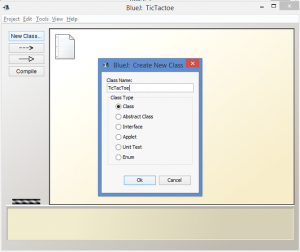


Once it launches, point it to the directory you want to use for installing. It has been written in BlueJ, and my gut feeling is looking at other postings it probably isnt Press J to jump to the feed. If you're using the generic installer, launch it with Java from a terminal: $ java -jar. It also offers a "generic" installer, delivered as a JAR file (the usual Java format). BlueJ also requires JavaFX (as a separate download), so follow the instructions on the BlueJ site. After you've installed Java and JavaFX, launch the BlueJ installer.īlueJ has downloadable installers for Ubuntu Linux, Windows, and macOS. However, to use BlueJ, you must have the same version of Java used by BlueJ, so check the version you have against what BlueJ requires. You need Java to program in the language anyway, so you may already have Java installed.
#BLUEJ GAME INSTALL#
Installing BlueJīlueJ is written in Java, so to run it, you must install Java.

It's meant to help you learn the language, not to type faster or more efficiently.
#BLUEJ GAME FULL#
It's very much a learning tool, and it's purposefully less helpful than a full IDE like Eclipse or NetBeans. You don't have to rely on indentation to see that a Java method falls within a specific class because you can see the blocks of code.īlueJ isn't an all-purpose IDE. By using colored backgrounds, BlueJ helps you visualize the structure of the code you're writing. It can be nearly impossible to tell a variable apart from a keyword that's a part of the language, and even with the assistance of indentation and braces and semicolons, it all starts to blur together.īlueJ is designed to clear away this confusion. It doesn't help that when you're learning to program, most of the code you type looks and feels basically the same: it's all vaguely meaningful, yet oddly similar, with words that seem to make as much sense whether you read them backward or forward. If you're new to programming-or just new to Java, it can be difficult to understand advanced concepts like variable scoping and loops and conditionals. It uses a subdued color scheme to keep different code elements separate from one another, so it's easy to tell a class from a method or a comment. When you create a new class, BlueJ generates a clean but robust template with hints toward what you need to do.


 0 kommentar(er)
0 kommentar(er)
